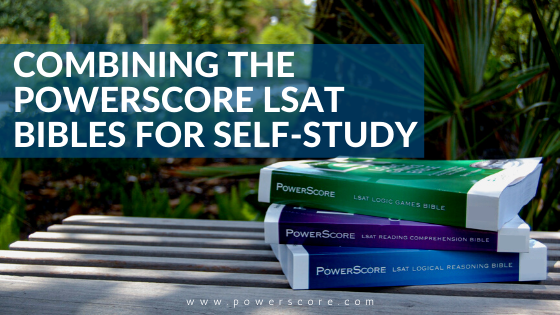
Start with Your Struggles
Start by reading the LSAT Bible that covers the section that concerns you most. You should always begin by attacking any weakness that you have. For example, if Logic Games gives you worries, begin by reading the LSAT Logic Games Bible. If another section troubles you, start with that LSAT Bible first.
The Logical Reasoning Bible
The LR Bible contains discussions that expand upon sections of the LG and RC Bible. The first six chapters of the Logical Reasoning Bible cover topics that are relevant to the other two Bibles. Chapter Two of the Logical Reasoning Bible discusses argumentation, which is critical to understanding the structures in Reading Comprehension, and Chapter Six discusses conditional reasoning, which is critical to understanding Grouping games. While the RCB addresses argumentation, it does so in a briefer form than the discussion given in the LRB.
Similarly, while the Logic Games Bible discusses conditional reasoning and diagramming, the discussion is briefer than the one presented in the LRB. Thus, students who have read the first portion of the LRB before getting deeply into the other two Bibles will have an advantage in understanding the ideas in those two books. If possible get to Chapter Six of the LRB before starting getting too far into either the LGB or RCB.
Chapter One is Always the Same
Once you have read Chapter One of any of the Bibles, you can skip that chapter in the other Bibles.
The Last Chapters are Similar
Specifically, the discussion in the last chapter of the LSAT Logic Games Bible and the Reading Comprehension Bible are similar.
Because each section of Logic Games and Reading Comprehension contains four games or passages that must be completed in 35 minutes, the general strategy for each is very similar. If you have read the last chapter of one of those books and are pressed for time, skip the last chapter of the other book.
Work Simultaneously
The best approach is to use the LSAT Bibles simultaneously. While the Bibles can be read sequentially, that is probably not the best approach for most students. A better approach is to read sections of each Bible at a time.
This approach helps break up the tedium that sometimes accompanies studying for the LSAT. It also allows you to take entire practice tests on a regular basis. This helps you track your progress in all three section types. Approaching the books in this fashion also gives you the opportunity to catch any area of weakness early on. If you do find such an area, you can then focus more on the Bible that addresses that section.
No “Right” Way
While there is no one “right” way to use the LSAT Bibles, these points may help you shape your study plan. Just remember that each book is designed to cover its topic in totality. Regardless of how you use the books you should derive great benefits by completing each. If you are self-studying, also keep in mind that our Free LSAT Help and Self-Study Area contains a test scoring analyzer to help you diagnose your strengths and weaknesses and a self-study guide.

Leave a Reply